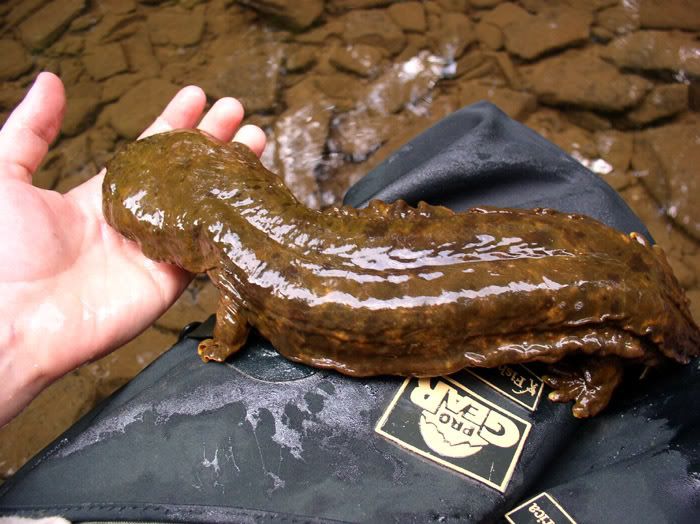
Which salamanders have four legs, a flat head, a paddle-like tail, beady little eyes and are called names like "snot otter" and "devil dog"?
Also known as Allegheny alligator, mollyhugger, and mud cat, the hellbender (Cryptobranchus alleganiensis) is North America’s largest salamander, reaching lengths of nearly 30 inches.
These strange, but interesting creatures once thrived in thousands of pristine streams throughout the eastern United States. Populations have drastically declined, mainly because of declining stream quality. Not only has the hellbender population dwindled by 80 per cent in the last 30 years, but those remaining have severe deformities – missing toes, limbs and open sores. There is a 95 per cent chance of extinction of this animal over the next 75 years.
The average age of Cryptobranchus in the wild is unknown, but in captivity, they have lived as long as twenty-nine years.
Hellbenders are not venomous, though their skin secretions are somewhat toxic. They will bite, but only if they are really provoked. A common myth is that hellbenders will 'ruin' good fishing streams by eating all the fish. This couldn't be farther from the truth! In fact, if you see hellbenders in a stream, this is an excellent indication that the water quality is still good -- and this is good for both hellbenders and game fish. The hellbender's voracious appetite for crayfish also means that they are very important for keeping a stream's food chain balanced, and this is good for fish and the entire ecosystem.

Photo #1: Kurt Buhlmann
Photo #2: Jeff Humphries
